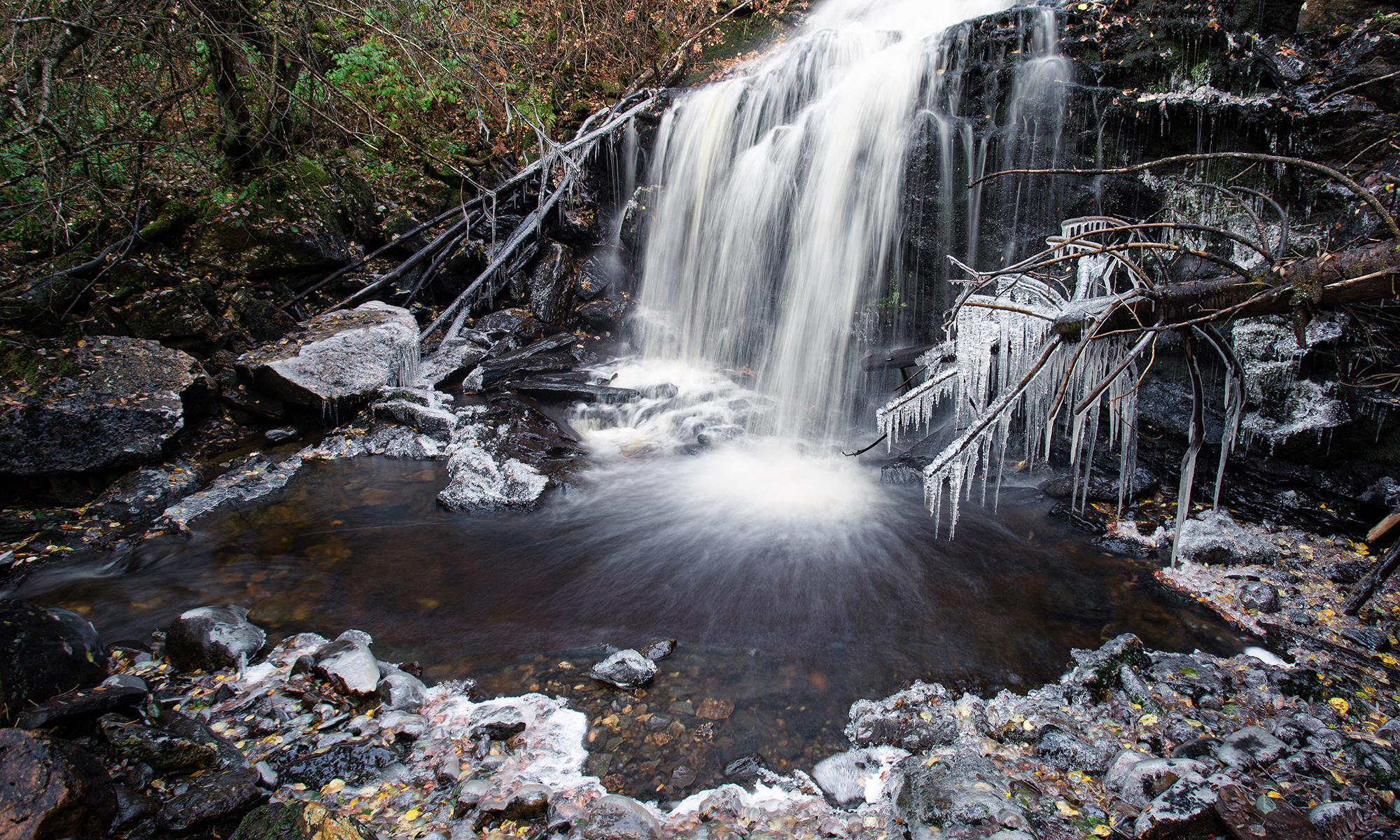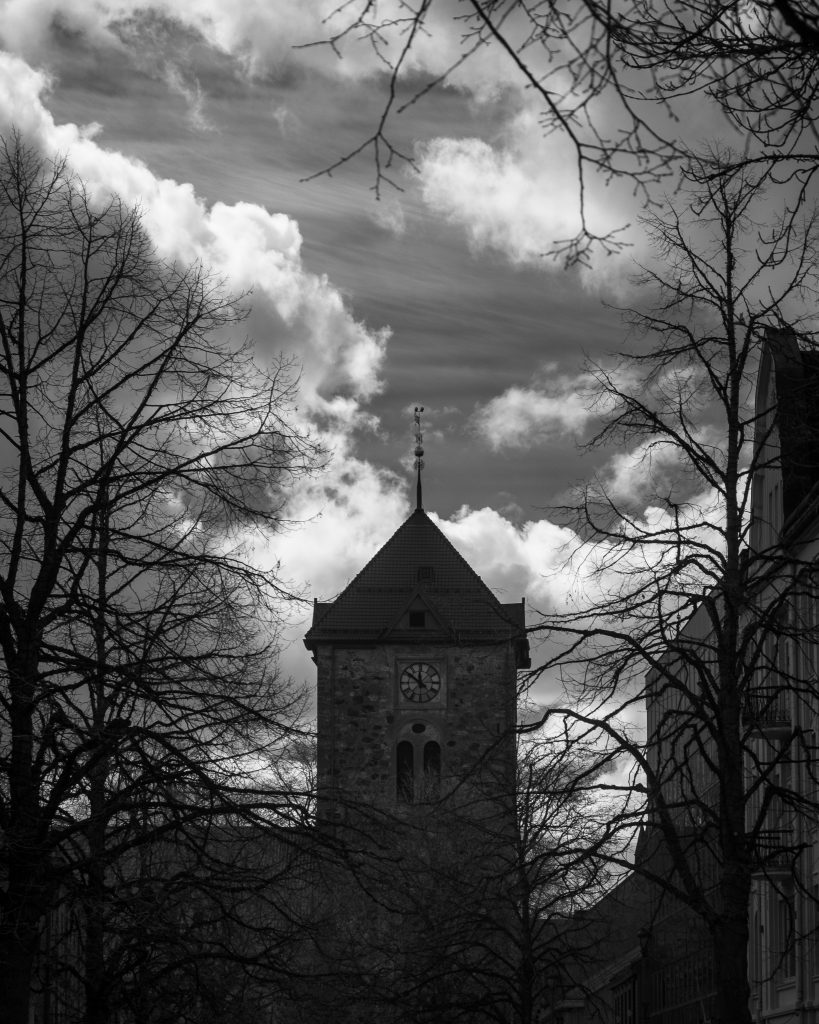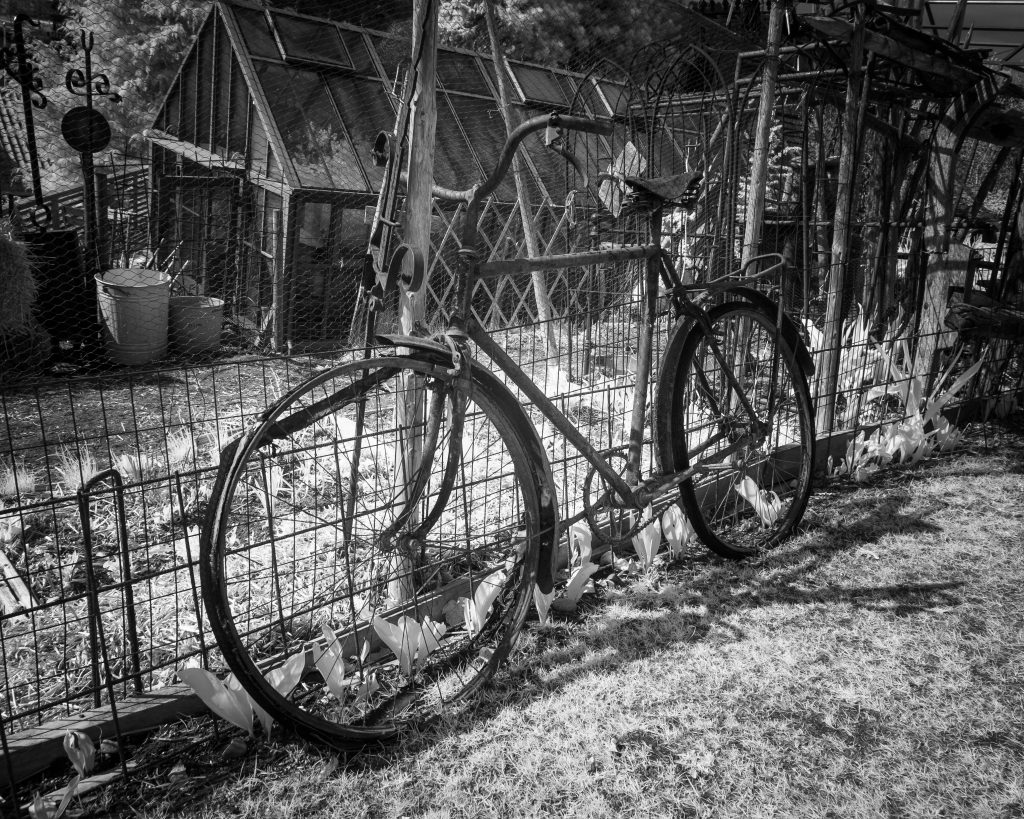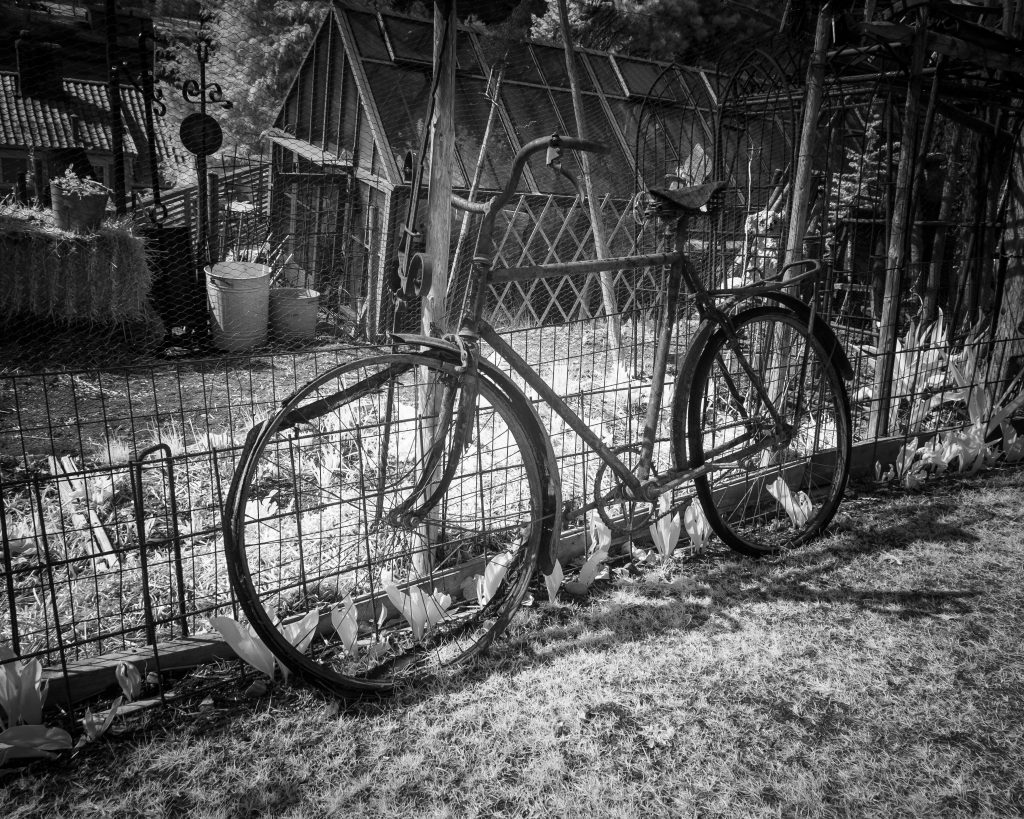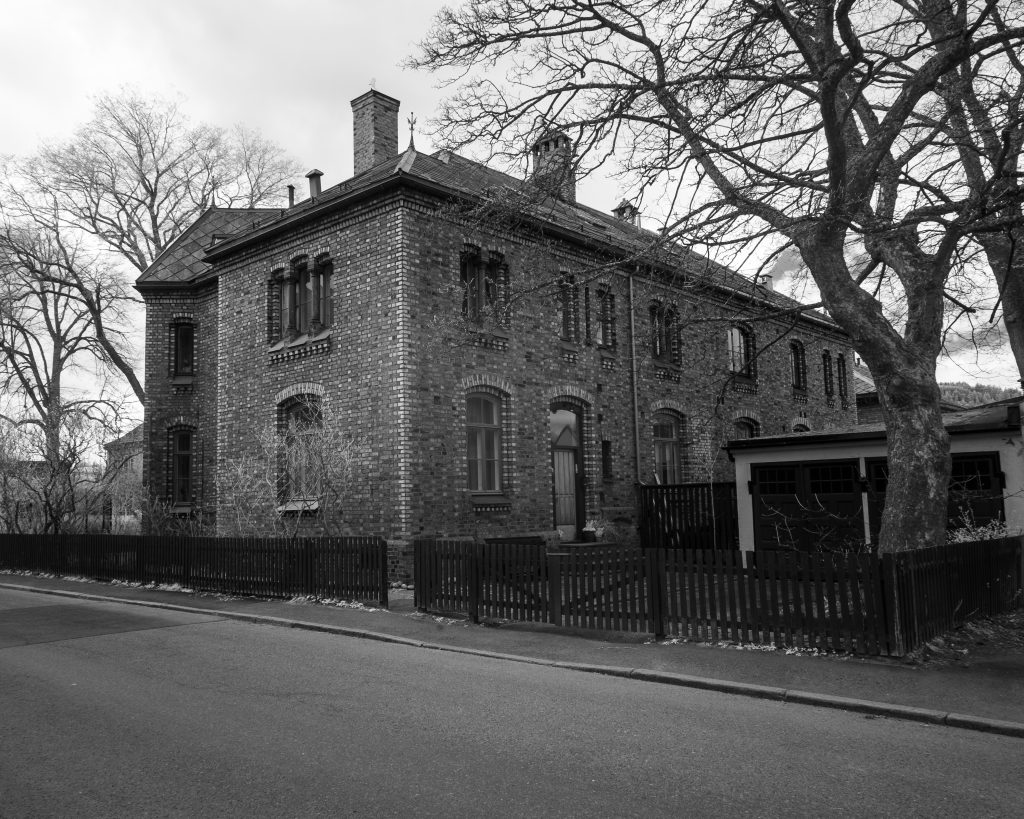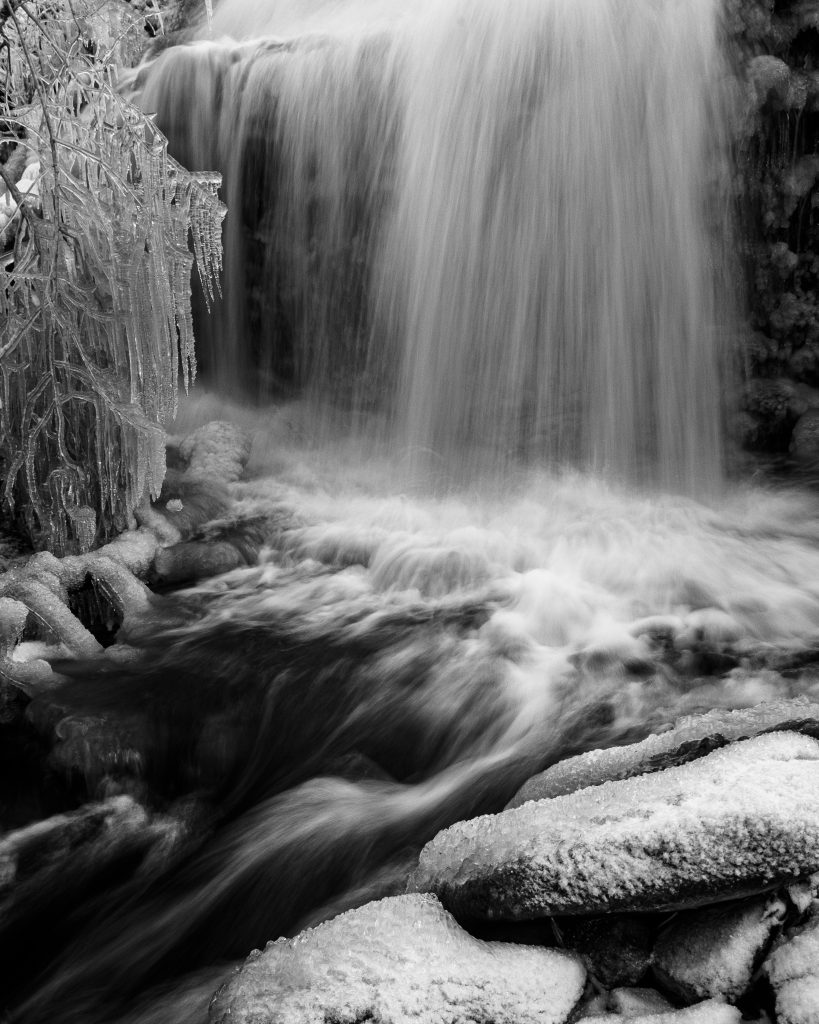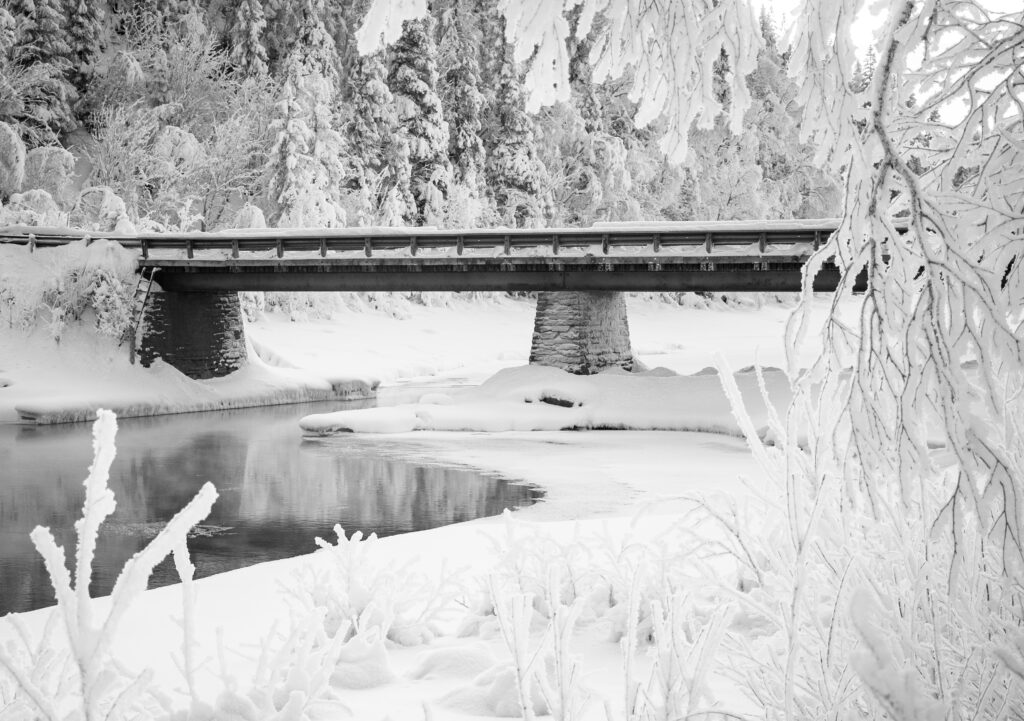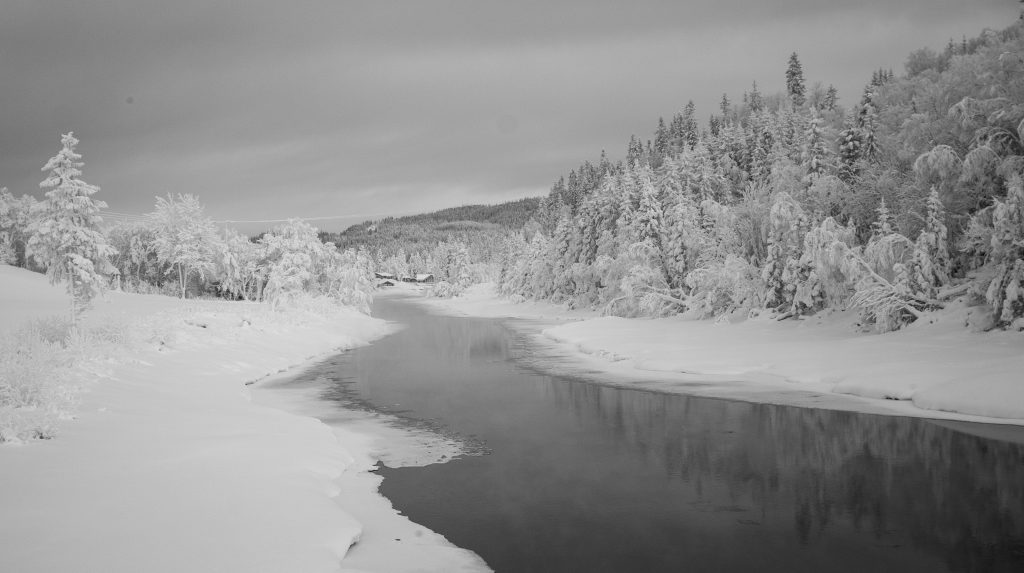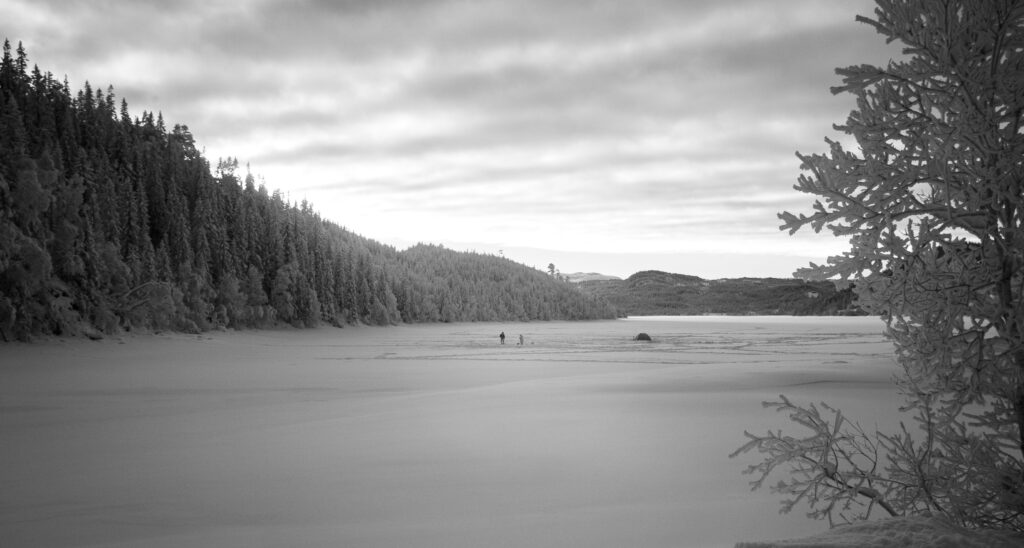I went to Trondheim to see if I could find something to capture with my Infrared camera. Bright sunny days with some scattered clouds will create dramatic scenes.

Vår Frue church 
Vår Frue church 
An old rusty bike 
An old rusty bike 
One of the many buildings in Trondheim
The IR camera get at different kind of black and white look. I find it quite unique. Compared to a regular black and white image it has more contrast and some elements reflect IR light different than regular light.
